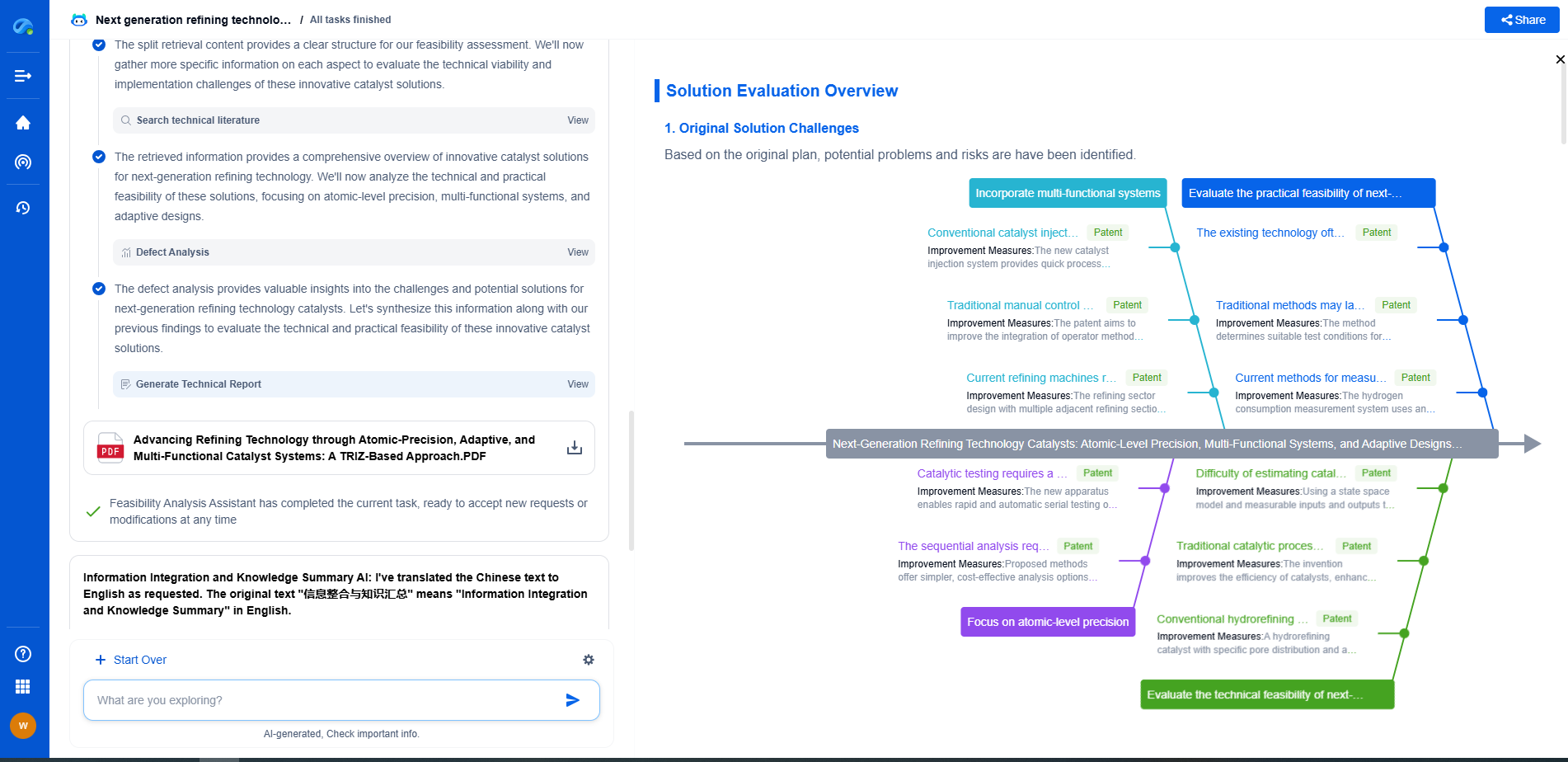Beam control systems in high-power laser cutting and welding
JUL 15, 2025 |
Understanding Beam Control Systems
Beam control systems in high-power laser applications are designed to manage and direct the laser beam with high precision. These systems are responsible for focusing the laser to the exact point required, maintaining beam quality, and ensuring that the laser operates within its specified parameters. Effective beam control is essential for achieving the desired outcomes in cutting and welding, where precision and consistency are paramount.
Key Components of Beam Control Systems
1. **Beam Delivery**
Beam delivery is a critical aspect of laser control systems, involving the transmission of the laser from the source to the workpiece. This requires a combination of optical elements like mirrors, lenses, and fiber optics. These components must be precisely aligned to maintain beam quality and prevent losses or distortions during transmission. The choice between using free-space optics or fiber optics depends on specific applications and requirements.
2. **Beam Focusing**
The focusing mechanism is integral to the cutting and welding process, concentrating the laser energy onto a tiny spot to achieve high power density. This is typically achieved using lenses or specialized focusing heads designed to handle high-power levels. The ability to adjust the focal point dynamically is crucial, especially in applications requiring variable focus depths or working with materials of varying thicknesses.
3. **Beam Modulation and Control**
Modulation of the laser beam allows for the adjustment of power levels, pulse durations, and repetition rates. This control is vital for adapting the laser to different materials and cutting or welding scenarios. Advanced beam control systems integrate computerized controls and sensors to automate and optimize these parameters in real-time, enhancing both the precision and the efficiency of the process.
4. **Cooling Systems**
High-power laser operations generate significant amounts of heat, which can affect both the equipment and the quality of the cut or weld. Therefore, efficient cooling systems are integral to beam control systems. These systems ensure that the optical components are maintained at optimal temperatures, preventing thermal distortions and prolonging the lifespan of the equipment.
Technological Advancements in Beam Control
Recent advancements in beam control technology have significantly improved the capabilities of high-power laser systems. Adaptive optics, for example, allow for real-time adjustments to the beam path and focus, compensating for any aberrations or misalignments. Additionally, the integration of artificial intelligence and machine learning into beam control systems has led to smarter and more autonomous operations, enabling the system to learn from previous laser applications and optimize future performance.
The emergence of ultrafast lasers has also necessitated advancements in beam control systems. These lasers require extremely precise control due to their high peak power and short pulse durations. Beam control technologies have evolved to manage these demands, incorporating features like ultra-precise timing and synchronization mechanisms.
The Importance of Beam Quality
Beam quality is a critical factor in the effectiveness of laser cutting and welding. A high-quality beam, characterized by a stable and consistent power distribution, ensures clean cuts and strong welds. Beam control systems play a pivotal role in maintaining beam quality by regulating parameters such as beam diameter, divergence, and uniformity. Maintaining a high beam quality minimizes defects and inconsistencies, leading to superior end products.
Applications in Industry
Beam control systems are instrumental across various industries that utilize high-power laser cutting and welding. In the automotive industry, for example, precision laser cutting is employed to produce intricate components with minimal waste. The aerospace sector relies on laser welding for creating lightweight yet robust structures, where the accuracy and consistency provided by advanced beam control systems are indispensable.
In the electronics industry, the miniaturization of components demands exceptional precision in cutting and welding, which can only be achieved through sophisticated beam control. Additionally, the medical field benefits from laser technologies in the manufacturing of medical devices and equipment, where precision is crucial for functionality and safety.
Conclusion
The evolution of beam control systems in high-power laser applications continues to push the boundaries of what is possible in cutting and welding. As industries demand greater precision, efficiency, and adaptability, these systems will become even more sophisticated, incorporating the latest technological advancements to meet the challenges of tomorrow. Understanding and investing in robust beam control is essential for any operation seeking to harness the full potential of laser technology.
From interferometers and spectroradiometers to laser displacement sensors and fiber optic probes, the field of optical measurement is evolving at light speed—driven by innovations in photonics, MEMS integration, and AI-enhanced signal processing.
With Patsnap Eureka, biomedical innovators can navigate cross-domain insights in optics, electronics, and biocompatible materials, while discovering IP trends across academic, clinical, and commercial datasets.
💡 Fuel your next breakthrough in optical health tech—start using Patsnap Eureka to unlock deep insights today.
- R&D
- Intellectual Property
- Life Sciences
- Materials
- Tech Scout
- Unparalleled Data Quality
- Higher Quality Content
- 60% Fewer Hallucinations
Browse by: Latest US Patents, China's latest patents, Technical Efficacy Thesaurus, Application Domain, Technology Topic, Popular Technical Reports.
© 2025 PatSnap. All rights reserved.Legal|Privacy policy|Modern Slavery Act Transparency Statement|Sitemap|About US| Contact US: help@patsnap.com

